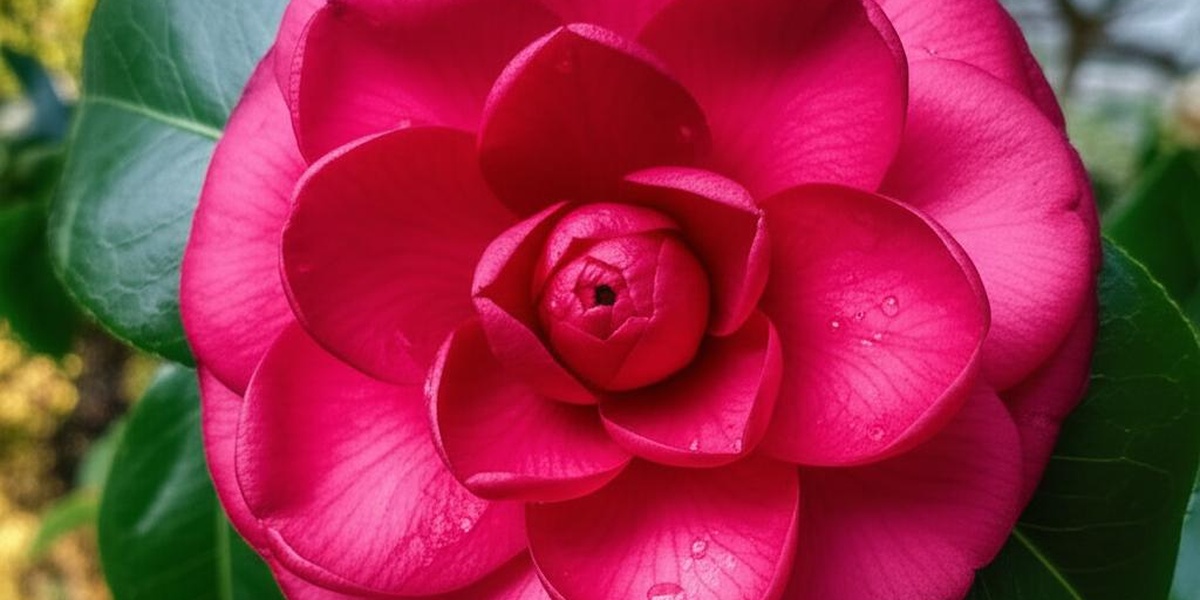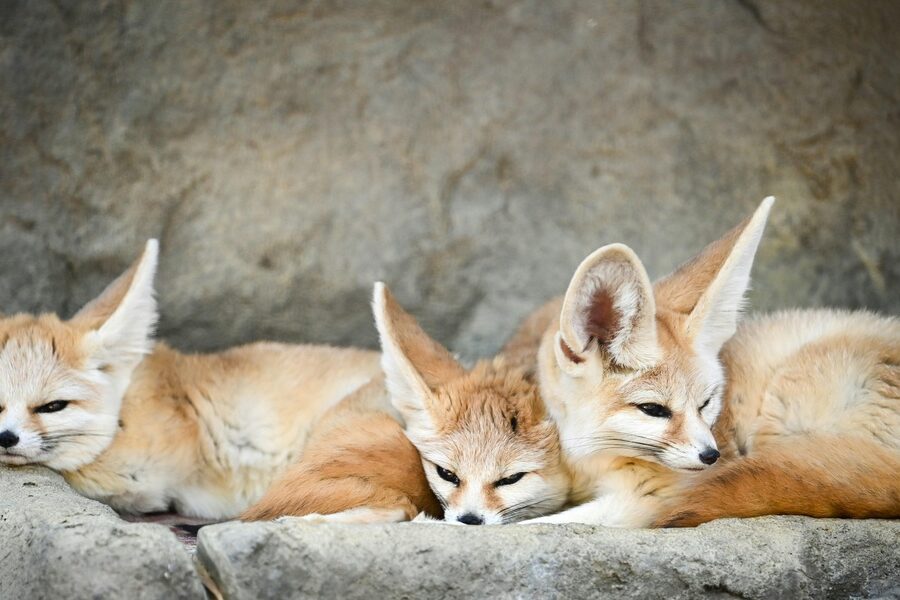Across cloud forests, alpine meadows and shaded wetlands, red blooms are often the hardest to spot because they appear in isolated pockets and short seasons. This list brings those pockets together so you can see which species prefer which habitats and why sightings are rare.
There are 20 rare red flowers, ranging from Besse’s Phragmipedium to Western Underground Orchid. For each entry you’ll find below Scientific name,Rarity status,Native range so you can check origin and conservation notes — you’ll find below.
How can I tell a rare red flower apart from more common red species?
Look beyond color: note habitat, flowering time, leaf and petal shape, and whether the plant grows singly or in colonies. Use the Scientific name,Rarity status,Native range in the list below to compare ranges and confirmed records, and consult local floras or conservation groups before assuming a sighting is unusual.
What should I do if I find one of these rare red flowers in the wild?
Do not pick or dig; many are protected or fragile. Record the location (GPS if possible), take photos from different angles, and report the find to a local conservation authority or native plant society so specialists can verify and advise on protection.
Rare Red Flowers
| Name | Scientific name | Rarity status | Native range |
|---|---|---|---|
| Kaka Beak | Clianthus puniceus | Critically Endangered in the wild | North Island, New Zealand |
| Cooke’s Kokio | Kokia cookei | Extinct in the Wild (EW) | Molokaʻi, Hawaii, USA |
| Chocolate Cosmos | Cosmos atrosanguineus | Extinct in the Wild (EW) | Mexico |
| Parrot’s Beak | Lotus berthelotii | Extinct in the Wild (EW) | Canary Islands, Spain |
| Titan Arum | Amorphophallus titanum | Endangered | Rainforests of Sumatra, Indonesia |
| Clay’s Hibiscus | Hibiscus clayi | Critically Endangered | Kauai, Hawaii, USA |
| Rothschild’s Slipper Orchid | Paphiopedilum rothschildianum | Critically Endangered | Mount Kinabalu, Borneo, Malaysia |
| Western Underground Orchid | Rhizanthella gardneri | Critically Endangered | Western Australia |
| Tanzanian Coral Tree | Erythrina schliebenii | Critically Endangered | Southern Tanzania |
| Feather-leaved Banksia | Banksia brownii | Critically Endangered | Southwest Western Australia |
| Mace Pagoda | Mimetes stokoei | Critically Endangered | Kogelberg Mountains, South Africa |
| Giant Padma | Rafflesia arnoldii | Vulnerable | Rainforests of Sumatra and Borneo |
| Red Vanda | Renanthera imschootiana | Endangered | Northeast India, Myanmar, Vietnam |
| Besse’s Phragmipedium | Phragmipedium besseae | Endangered | Andes of Ecuador and Peru |
| Subansiri Rhododendron | Rhododendron subansiriense | Endangered | Arunachal Pradesh, India |
| Sturt’s Desert Pea | Swainsona formosa | Not globally threatened, but culturally significant and difficult to grow | Arid regions of central and western Australia |
| Red Christmas Heliconia | Heliconia angusta | Vulnerable | Southeastern Brazil |
| Haleakalā Silversword | Argyroxiphium sandwicense subsp. macrocephalum | Vulnerable | Haleakalā volcano, Maui, Hawaii, USA |
| Magnificent Lipstick Plant | Aeschynanthus magnificus | Vulnerable | Borneo |
| Chilean Bellflower | Lapageria rosea | Regionally vulnerable | Southern Chile |
Images and Descriptions
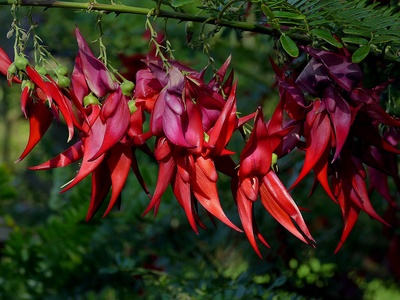
Kaka Beak
Named for its clusters of brilliant red flowers that resemble the beak of the native Kākā parrot. This spectacular shrub is now extremely rare in its natural habitat, with most existing plants found in cultivation as part of a crucial conservation effort.
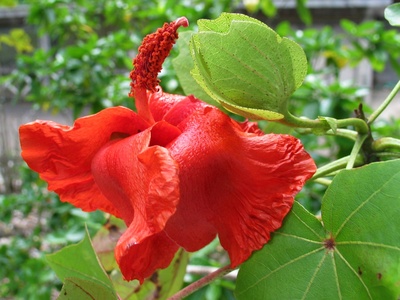
Cooke’s Kokio
One of the rarest plants in the world, this small tree no longer exists in its natural habitat. It survives only as grafted individuals in botanical gardens, producing stunning, large, bright orange-red flowers with ruffled petals—a relic of Hawaii’s lost flora.
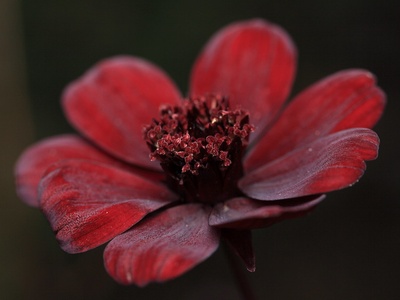
Chocolate Cosmos
This unique flower survives today only as a single, non-self-fertile clone propagated by division. Its velvety, deep brownish-red petals are prized not just for their color but for their faint, chocolate-like scent, a fragrance lost from the wild forever.

Parrot’s Beak
Believed to be extinct in its native habitat, this trailing plant is kept alive in cultivation. It produces dozens of fiery, scarlet-red, beak-shaped flowers. It was likely pollinated by a now-extinct bird, highlighting the fragile connections within an ecosystem.

Titan Arum
Famous for having the world’s largest unbranched inflorescence, this plant produces a giant, deep red to purple, funnel-like spathe. To attract pollinators, it releases a powerful stench of rotting meat, earning its nickname “corpse flower.” Blooms are rare, spectacular events.

Clay’s Hibiscus
A stunning Hawaiian native bearing brilliant, true-red flowers with a prominent yellow-tipped staminal column. This species is critically endangered due to habitat loss, with only a few small, fragmented populations remaining in the wild on the island of Kauai.
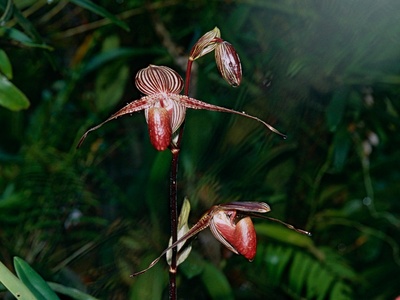
Rothschild’s Slipper Orchid
Known as the “Gold of Kinabalu,” its massive flowers feature long, horizontal petals dramatically striped in deep maroon-red and yellow-green. Illegal collection and habitat loss make this one of the world’s most endangered and sought-after orchids.

Western Underground Orchid
This bizarre orchid lives its entire life underground, even flowering below the soil. It produces a flower head of 50-100 small, inward-facing, reddish-purple flowers, relying on termites and a specific fungus for its unique life cycle.

Tanzanian Coral Tree
Once thought to be extinct for nearly a century, this species was rediscovered in a small, remote patch of forest. It produces brilliant scarlet-red flowers typical of coral trees. Its survival hinges on the protection of its tiny, isolated habitat from clearing.
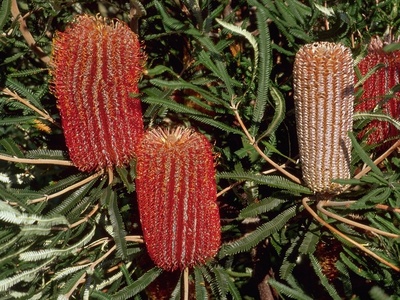
Feather-leaved Banksia
Considered one of the most attractive Banksia species, it has exceptionally fine, fern-like leaves. Its large, metallic-looking flower spikes are reddish-brown and sit within the foliage. It is highly susceptible to dieback disease, pushing it to the brink of extinction.

Mace Pagoda
A breathtaking member of the Protea family, this plant was also once thought extinct. Its unique flowerheads feature silvery-white tufts surrounded by brilliant red, hoof-like bracts, resembling a medieval mace. It is incredibly rare, with only a tiny wild population.

Giant Padma
Holding the record for the world’s largest single flower, this parasitic plant has no leaves, stems, or roots. Its massive, fleshy, reddish-brown and spotted flower can reach over 3 feet in diameter and emits a foul odor to attract carrion-fly pollinators.
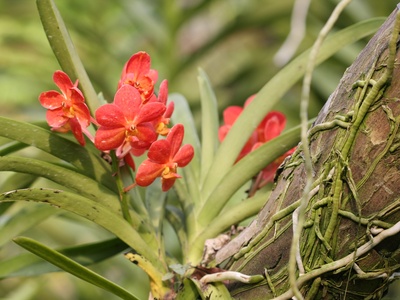
Red Vanda
A spectacular epiphytic orchid known for its long, branching sprays of vibrant, fiery red to orange-red flowers. Prized by collectors, over-harvesting and habitat loss have pushed this stunning species to an endangered status, making it a rare gem in the orchid world.

Besse’s Phragmipedium
This slipper orchid’s discovery in 1981 stunned the botanical world with its brilliant, fluorescent red-orange to scarlet color. It grows on wet, rocky cliffs, and illegal over-collection has made this vibrant species endangered in its native habitat.
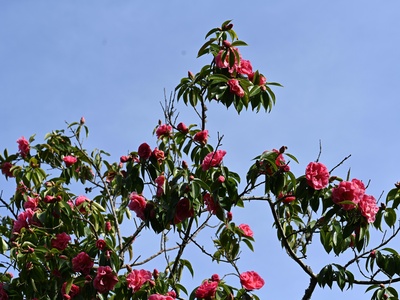
Subansiri Rhododendron
A rare and spectacular rhododendron that often grows as an epiphyte on other trees in the Himalayan foothills. It is celebrated for its large trusses of waxy, bell-shaped, blood-red flowers. Habitat destruction in its very limited range threatens its existence.
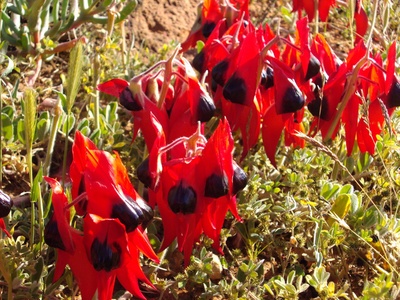
Sturt’s Desert Pea
An iconic Australian wildflower with striking, blood-red, leaf-like petals and a glossy black central boss. Its specialized growing needs make it a rare sight in gardens, though it can carpet the desert floor after sufficient rainfall in its native habitat.
Red Christmas Heliconia
Known for its striking, erect inflorescences that bloom around Christmastime in the Southern Hemisphere. It features bright red, waxy bracts that cup small, inconspicuous flowers. Habitat loss in Brazil’s Atlantic Forest has made this festive plant vulnerable in the wild.
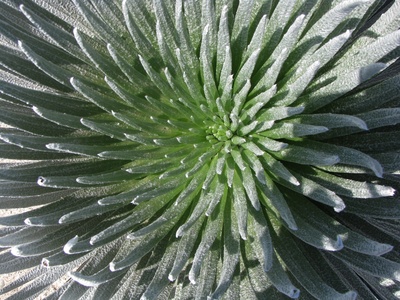
Haleakalā Silversword
This dramatic plant lives for decades as a rosette of silvery, dagger-like leaves before sending up a single, towering flower stalk. The stalk is covered in hundreds of nodding, wine-red to purplish sunflower-like blooms, a spectacular once-in-a-lifetime event.
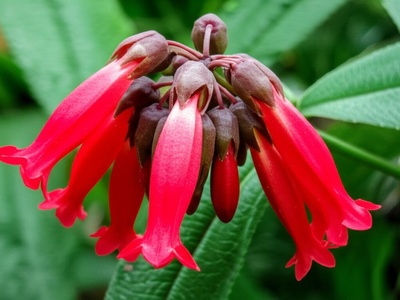
Magnificent Lipstick Plant
Living up to its name, this tropical epiphyte produces large, spectacular clusters of tubular, bright red flowers. Each bloom emerges from a darker, reddish calyx, resembling a lipstick emerging from its tube. Deforestation threatens its home in the Bornean rainforests.
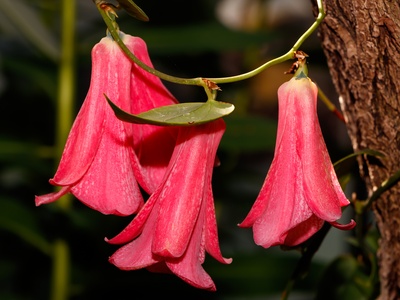
Chilean Bellflower
The national flower of Chile, this climbing vine produces large, waxy, bell-shaped flowers. While pink is common, the deep red varieties are particularly stunning. Wild populations are threatened by forest clearing, making this treasured plant increasingly rare in its native home.
